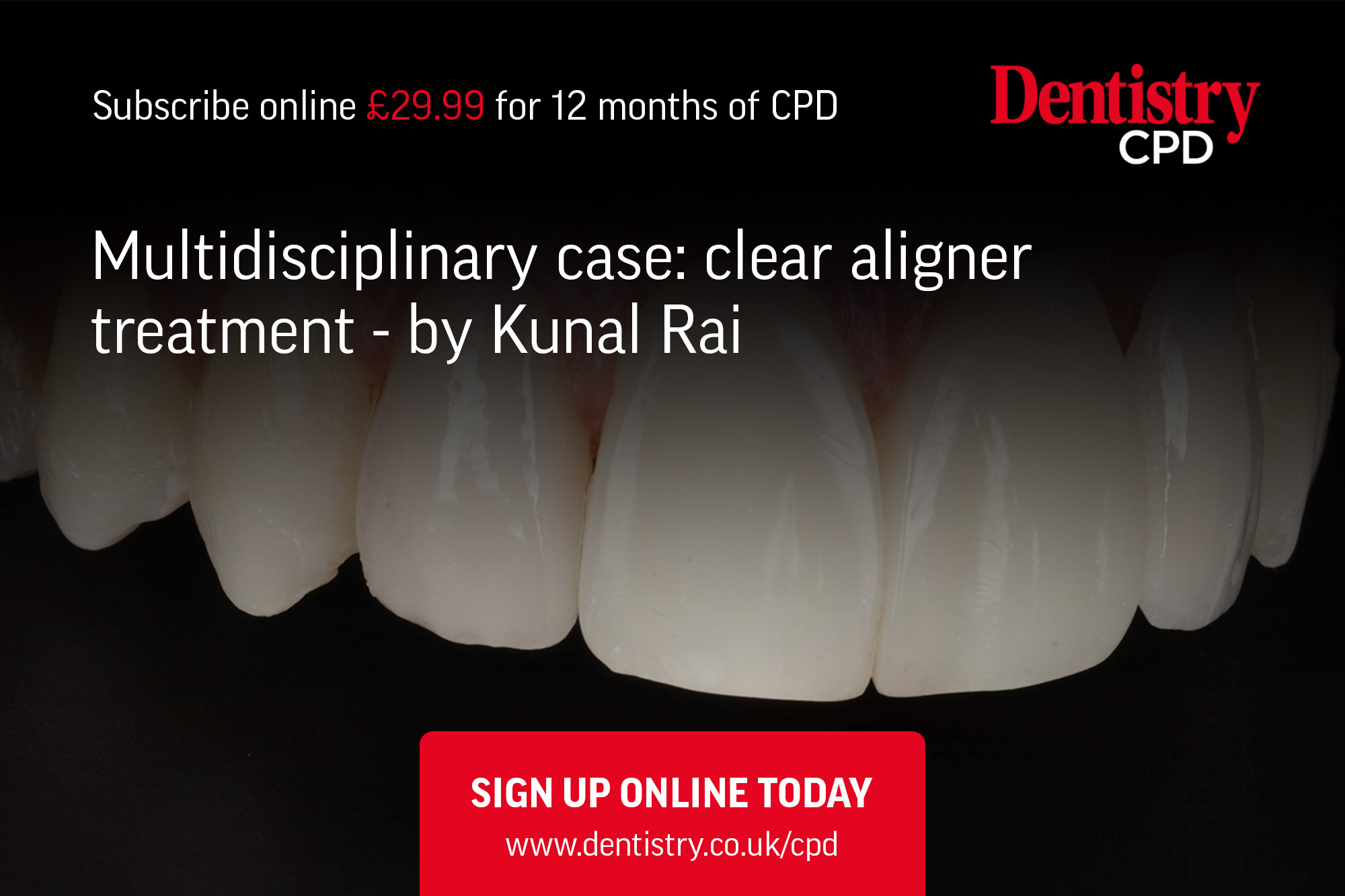
Kunal Rai presents a multidisciplinary case highlighting how careful case selection, assessment and treatment planning can provide an excellent outcome for patients using the Invisalign system.
A patient, in his early twenties, presented at the practice unhappy with his smile.
In the patient’s words: ‘I had braces when I was young, had a missing tooth and the dentist moved my teeth to close the gap. Now, everything is moved to one side, and I have Halloween-ready flanges. I hate smiling and want to do something about my smile.’
He reported no acute pain.
The patient wanted his teeth treated, however, he was unprepared to have fixed braces due to lifestyle reasons. To minimise lowering his confidence, he opted to have braces that were invisible.
Additionally, he wanted to have composite bonding to improve the edges of the teeth.
Case assessment
The patient’s last dental visit was more than six months ago. He was referred to us through a family member who we had recently treated.
As part of the initial assessment, we discussed his main concerns as well as his expectations. We then moved on to discussing his medical and social history.
The patient was generally fit and well, taking no medication and had no known allergies. His alcohol consumption was moderate, and he was a non-smoker.
His oral hygiene was acceptable: brushing twice daily with a manual toothbrush. No interdental appliances were used.
Figures 1 to 7* show the preoperative photographs and the Clincheck is shown in Figures 8a to 8e. The results of the extraoral and intraoral examination are summarised in Table 1.
A panoramic radiograph revealed good bone levels and root length/forms (Figure 9). No pathology was detected. The findings of the assessment allowed us to produce a problem list (Table 2), which enabled all possible treatment options to be discussed.
The treatment options included:
- No treatment
- Referral to specialist orthodontist for comprehensive treatment with fixed appliances (either lingual or labial)
- Fixed labial appliances with the same aim of achieving an improved overjet and overbite
- Restorative treatment without alignment (not recommended).
*To read the rest of this article, view the photographs and gain CPD, visit www.cpd.dentistry.co.uk/courses/multidisciplinary-case-clear-aligner-treatment.


